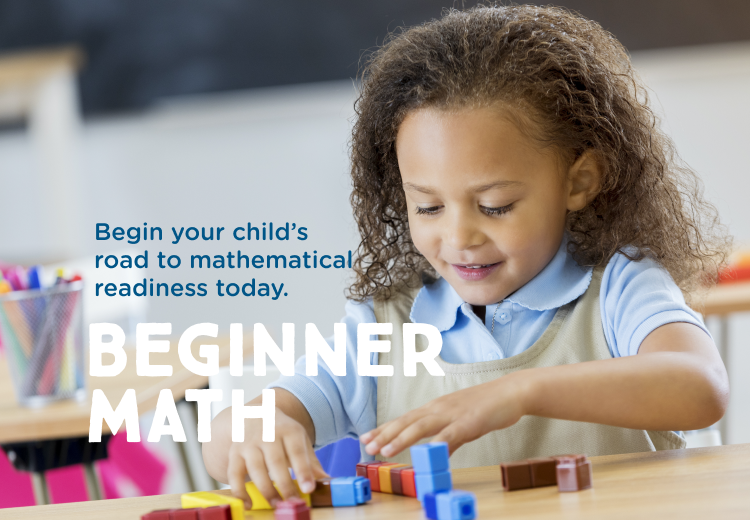Beginner Math (3-4 years old)
Foster a love for math and science at an early age with a class that supports logic, critical thinking and scientific inquiry.
Start with Beginner Math Skills for early learners, then advance to Intermediate Math Skills to get ready for Kindergarten.
Class Announcements
Homework
Each week your child will be able to access a homework assignment that corresponds with the weekly lesson.
Materials
We strongly recommend that you purchase the MathLink Cubes (200 pack) as we’ll be using them in weekly lessons.
Syllabus
Beginner Math Skills
1.Number and calculation
- Counting within 20
- Addition and subtraction within 5, 10 and 20
- Series of additions and subtractions within 10
2.Logic and spatial thinking
- The characteristics and formation of 2D shapes
- Reading an analog clock
- Pattern and spatial orientation
- Sorting/classification
Science experiments (basic sense about chemistry, biology and physics)
- Formation of rain cloud
- Learn buoyancy and density
- Balloon Rocket
- And more…
Benefits:
SOME of the concepts incorporated into Beginner Math Skills are:
Problem Solving:
Convergent problem solving - the ability to gather individual pieces of information together in one’s mind and come to a single solution to a problem.
Divergent problem solving - the ability to gather many pieces of information and consider a variety of possible solutions to a problem.
Divergent problem solving - the ability to gather many pieces of information and consider a variety of possible solutions to a problem.
Number Sense:
The concept of understanding numbers will help children to understand the connections between quantities, counting, more, less, etc.
Shapes:
Shapes are also known as early geometry! That’s right…what is geometry but the study of shapes? At this age, rather than work with formulas for diameters and circumferences, they will identify basic shapes by comparing, sorting, classifying and drawing them.
Spatial Sense:
Spatial sense is the ability to place items in the correct spaces or places using a logical design or a pattern. As an example, we see this when children are working on puzzles.
Ordering/Seriation:
When ordering or seriating items, the child compares more than two items or groups and places them in a logical sequence, like lowest to highest, smallest to largest, first to last. Eventually, they will come to understand that 6 is higher than 5 or 20 is higher than 10.
Patterning:
Patterns are the ability to place items in a specific order that repeats, such as: patterning a pompom caterpillar in an AB pattern—yellow, blue, yellow, blue; patterning the children in a line—boy, girl, boy, girl.
Counting:
There are 2 types of counting children will learn:
Rote Counting- reciting numbers in order from memory.
Rational Counting- is counting items in a group and then understanding that the last number stated IS the amount for the set.
Rote Counting- reciting numbers in order from memory.
Rational Counting- is counting items in a group and then understanding that the last number stated IS the amount for the set.

